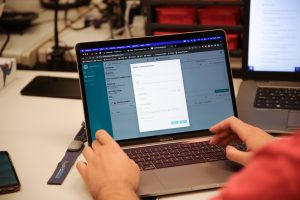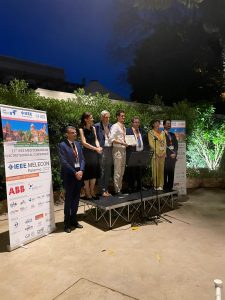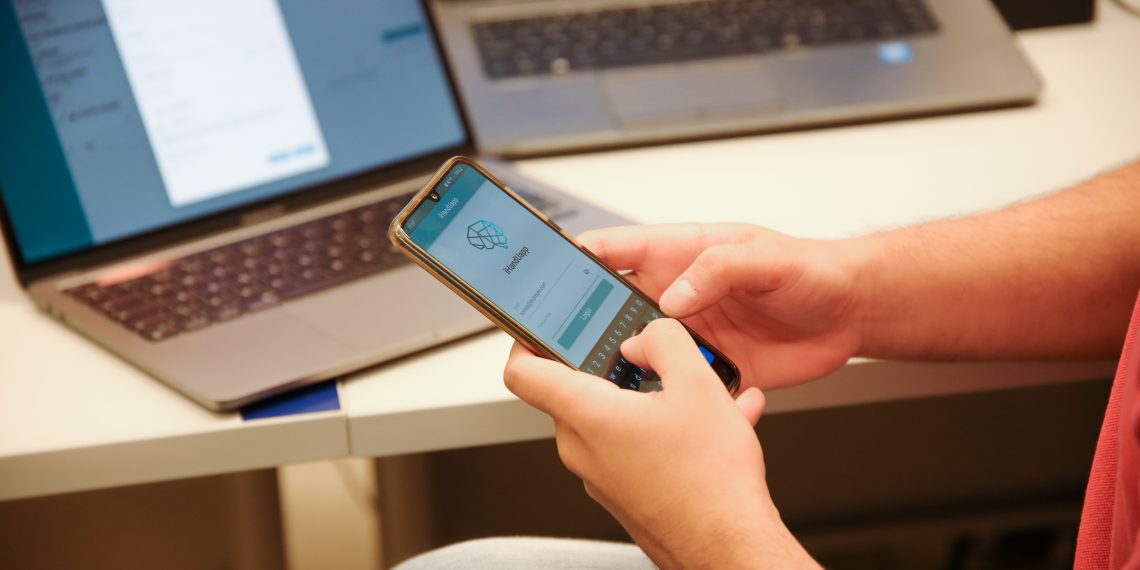Patients with Parkinson’s disease will be able to monitor the symptoms associated with the disease and send data, in real time, to the healthcare professionals who follow them – from home, and via their mobile phones. This innovation in the health area is only possible thanks to the iHandUapp system, a mobile technology developed by NESC TEC; it also features a web platform that aggregates the data and provides healthcare professionals with a record of the clinical evolution of patients.
Parkinson’s disease is estimated to affect 10 million people worldwide. It is a neurodegenerative disease that influences mobility and whose evolution differs from case to case. In this context, INESC TEC developed the iHandUapp system, which aims to facilitate the monitoring of Parkinson’s symptoms, both from home and in clinical environments, and, consequently, their progression.
“The system consists of a hybrid mobile application, ready to operate on Android and iOS, through which patients can manage their medication, perform tests to monitor the symptoms associated with the disease, and keep healthcare professionals informed if any relevant event occurs. In addition, it also includes a specialised dashboard for professionals to monitor the clinical record of users, and a database, hosted on the cloud, which provides information in real time”, said Duarte Dias.

According to the INESC TEC researcher, the iHandUapp can connect with external components, called appcessories, for better symptom monitoring and tests to analyse the motor symptoms of patients. This is the case of the iHandU, a wearable device with embedded electronic components that integrates a patented technology and allows to quantify the stiffness of the wrist, one of the main symptoms of Parkinson’s disease – a solution that has been developed by INESC TEC since 2015.
“This patented technology is currently being used during the surgeries for deep brain stimulation; with this new system, healthcare professionals will be able to use it in medical appointments or when their patients are at home, thus facilitating the monitoring process”, explained the head of the initiative, stating that this technology was transferred by the institution to the market through InSignals Neurotech, a spin-off launched by INESC TEC in 2019.
“The first prototype of the iHandUapp system provides a promising proof of concept that, with some adjustments, will certainly add value to Parkinson’s disease monitoring. The application and other functionalities were analysed together with the healthcare professionals of the Centro Hospitalar Universitário de São João (CHUSJ), focusing on their problems and needs. The feedback we received was very positive, which reinforces the usability, simplicity, and suitability of the solution”, concluded Duarte Dias, who is one of the coordinators of the Centre for Biomedical Engineering Research (C-BER).

The iHandUapp system was first presented at the IEEE MELECON conference, through the scientific paper “PDapp: A Companion Mobile Application with Appcessories for Continuous Follow-up of Parkinson’s Disease Patients”. The research work received the award for best paper at the conference, a recognition that shows the importance, value, and scientific, technological and clinical impact of this system. This conference is an international forum of reference in the field of electrotechnical technologies and emerging computers, which took place in the city of Palermo (Italy), between June 14 and 16.
The award-winning paper was written by researchers Nuno Oliveira, Joana Silva, Duarte Dias and João Paulo Cunha, a professor at the Faculty of Engineering of the University of Porto – all members of the team responsible for the development of the iHandUapp system, which began in 2020. The supervision of João Massano, a neurologist at CHUSJ, was crucial to design a system adapted to clinical needs. The system has been evolving and will be used in a clinical study already approved by CHUSJ, now with the contribution of two more researchers: Eduardo Campos and Adriana Arrais. The next goal is to license the technology to InSignals Neurotech.




 News, current topics, curiosities and so much more about INESC TEC and its community!
News, current topics, curiosities and so much more about INESC TEC and its community!